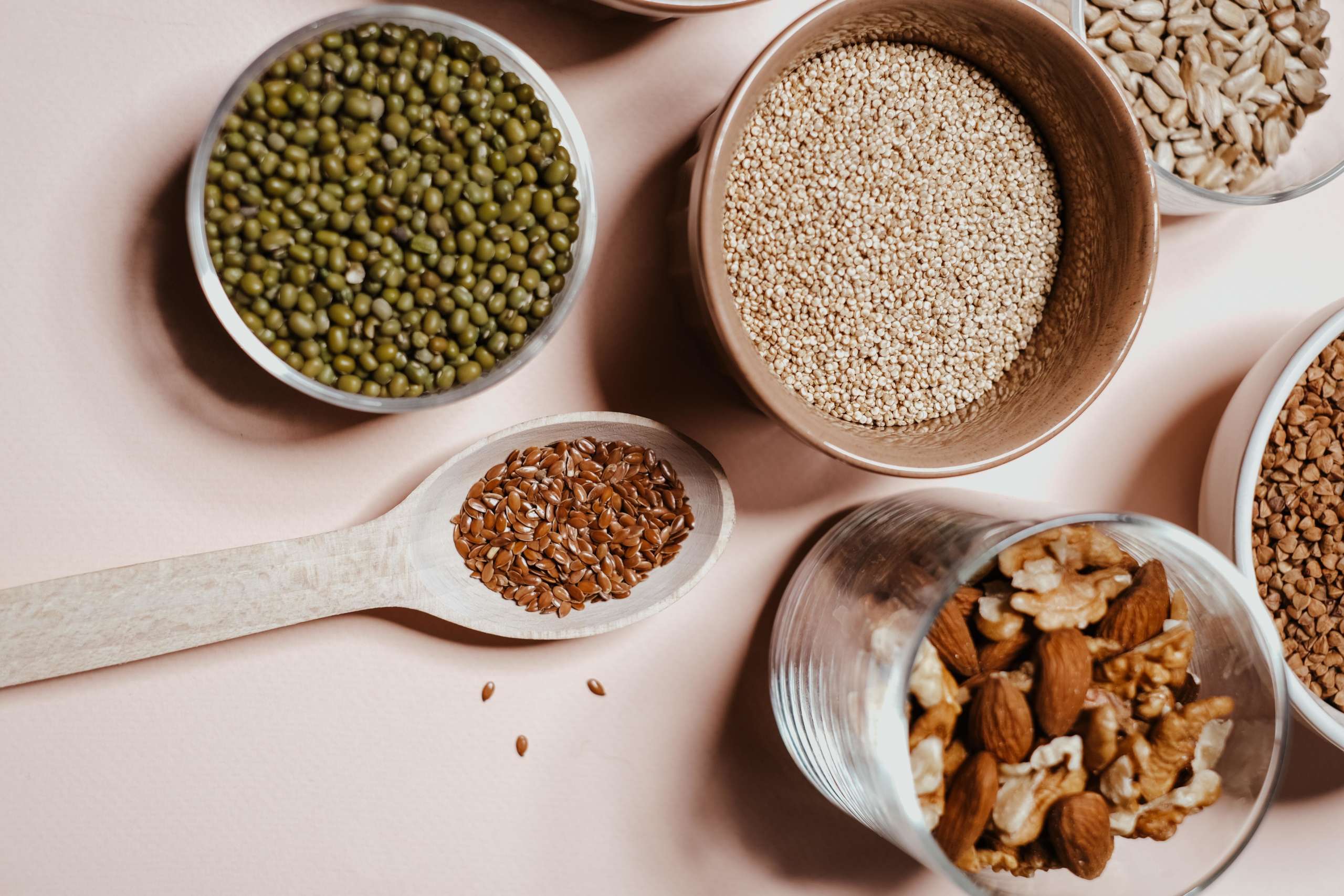Plant proteins are both a delicious and nutritious addition to mealtimes. This macronutrient is an important part of daily nutrition and an even more important nutrient for growing children’s bodies.
Protein plays a critical role in building muscle, repairing tissue, providing energy, supporting your immune system, and so much more. In recent years, more and more people are including plant-based proteins in place of animal-based proteins. According to a U.S. survey by the International Food Information Council, 28 percent of people reported eating more plant proteins between 2019 and 2020 (1). In this article, you will learn about the benefits of plant-based proteins and how to include them in your child’s diet.
Why choose plant proteins?
Plant proteins are an excellent alternative to animal proteins when it comes to adding more nutrition to your child’s diet. This type of protein also has many health benefits when consumed regularly.
According to research, a plant-based diet has been shown to reduce the risk of cancer (2). Other studies have shown that eating plant-based foods can help reduce weight and prevent and treat type 2 diabetes (3). In addition, substituting animal protein with plant protein can add fiber, additional vitamins and minerals, and antioxidants to daily nutrition; these combined nutrients promote better digestion and better heart health (4).
How to add plant proteins into your child’s diet
Adding plant proteins into your child’s diet does not have to be complicated. Here are some helpful tips for adding plant-based proteins into your child’s daily routine:
● Start slow. Adding plant proteins means adding fiber, which can take some time for your little one’s digestion to adjust. But, remember fiber is a good thing, and working your way up to the recommended daily intake is simplified when their proteins now have fiber as well.
● Figure out what kinds of plant proteins your child likes best. Experiment with different flavors and textures as you serve these new, or maybe not so new, foods. Try adding tofu to a stir fry, black beans to tacos, or lentils into sloppy Joes. The options are endless.
● Have your child help you pick out a new plant protein to try for the week at the grocery store with you. Give them a few options to choose from and let them take it from there. Trying new foods can be exciting and nutritious!
● Let your child help prepare the plant-based protein for the meal. This exposure is an excellent way for your child to familiarize themselves with the new food before they see it on their plate. This act can lead to more willingness to try the food when you serve the food at mealtimes.
Plant protein types
Many of the foods your child already eats contain some protein. You may have heard of the term “complete protein” which is defined as a source of protein that contains an adequate proportion of each of the nine essential amino acids needed in the human diet. Your child’s complete protein needs can be met entirely through plant-based proteins. There is no need to combine foods at meals to create complete proteins. The key is to include an assortment of plant proteins throughout the day. Here is a list of plant protein types:
● Legume-based: lentils, chickpeas, kidney beans, black beans, bean burgers,
● Soy-based: tempeh, tofu, edamame, soy milk, soy crumbles
● Grain-based: seitan, amaranth, quinoa, sprouted grain bread, whole wheat flour, spelt, teff, oats, brown rice
● Nut- and seed-based: almonds, hempseed, cashews, Brazil nuts, pistachios, chia seeds, flax seeds, nut butters
● Pea protein-based: Pea protein, pea milk, green peas
● Veggie-based: potatoes, brussel sprouts, artichokes, sweet potatoes, spinach, broccoli, asparagus
● Other: nutritional yeast, spirulina
Sources
- International Food Information Council. 2020 Food & Health Survey. 10 June 2020. https://foodinsight.org/2020-food-and-health-survey/
- Lanou, A. J., & Svenson, B. (2010). Reduced cancer risk in vegetarians: an analysis of recent reports. Cancer management and research, 3, 1–8. https://doi.org/10.2147/CMR.S6910
- McMacken, M., & Shah, S. (2017). A plant-based diet for the prevention and treatment of type 2 diabetes. Journal of geriatric cardiology : JGC, 14(5), 342–354. https://doi.org/10.11909/j.issn.1671-5411.2017.05.009
- Kim, H., Caulfield, L., Garcia‐Larsen, V., Steffen, L., Coresh, J., & Rebholz, C. (2019, August 07). Plant‐Based diets are associated with a lower risk of incident cardiovascular disease, cardiovascular disease mortality, And all‐cause mortality in a general population of Middle‐Aged Adults. Retrieved from https://www.ahajournals.org/doi/10.1161/JAHA.119.012865




